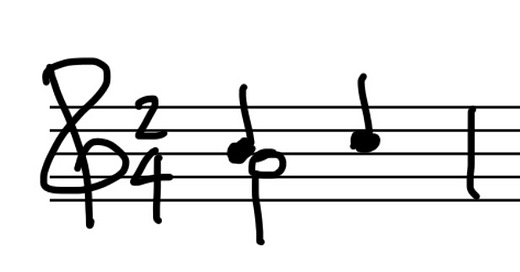I remember the early seventies, a tab of mescaline dissolving into my bloodstream, and the rain tapping gently against the window. I found myself seated in front of a piano, a blank sheet of manuscript paper spread before me. My young bride sat nearby in silence, and as I pressed a key with deliberate slowness, I listened. The note resonated through the room, filling the space with anonymity I had never truly considered before. The ringing metal strings, the timbre, and tone, the gradual decay into silence—each became an epic journey in itself. I discovered, at that moment, the infinite possibilities within a single note.
A single note has the power to pierce the fabric of our being, awakening emotions we might not even know we harbour. It is more than a simple vibration of air, more than a mere mathematical frequency. It is a living pulse, a sound that taps into ancient rhythms embedded in our collective memory. When we hear it, we aren’t just listening; we are feeling the weight of centuries, the echoes of distant voices, the primal hum of existence itself.
Imagine the note as a brushstroke on the canvas of silence. Its pitch strikes us like an unspoken question: "Do you hear me?" Whether high and piercing or low and rumbling, it stirs something fundamental within us. It aligns us, however briefly, with the intricate harmonics of the universe, connecting us to the cosmic dance of order and chaos.
Duration shapes the experience, defining the space the note occupies in our consciousness. A long, sustained note—like the toll of a church bell rolling across an empty town—can stretch a moment into eternity. A short, clipped note, by contrast, is like a gasp—a fleeting breath that leaves us yearning for more, caught in its wake.
Yet it is timbre, the unique colour of a note, that enters our soul. The same pitch from a cello might draw tears, while a trumpet could rally us to action. Timbre is the fingerprint of sound, the essence of its identity. It stirs personal memories and emotions, reminding us of places we’ve walked, faces we’ve loved, and the bittersweet beauty of time slipping away.
Dynamics, the rise and fall of volume, breathe life into a note. A whispering pianissimo draws us in, inviting intimacy, while a thunderous fortissimo demands our attention, shaking loose our inhibitions. The note pulses with energy, ebbing and flowing like the breath of a lover whispering in the dark.
The articulation of a note tells its own story. A crisp staccato might evoke the playful innocence of childhood, while a languid legato glide feels like the gentle caress of a cherished memory. Each attack and release is a distinct expression of the human experience, transcending language and touching the essence of emotion.
And then there is the envelope, the subtle arc of a note's life—its bold entrance, its tender decay. It is in this fleeting moment that music finds its magic, reminding us of the transient nature of all things. Just as life begins and ends, so too does each note. It lingers briefly, leaving behind an afterimage in our minds, a ghostly reminder of impermanence.
A single note is never truly alone. It carries within it the weight of harmonics, the shimmering overtones that create richness and complexity. These harmonics are the invisible threads that bind us to the vibrations of the earth, the hum of the universe itself.
When a single note enters our ears, it does not stop there. It resonates within us, syncing with our heartbeat, our breath, our thoughts. It becomes a communion between sound and self, reminding us that we are part of something vast, profound, and mysterious.
Why does a single note affect us so deeply? Because it speaks to our shared humanity, our longing for connection, our need to feel alive. It is the simplest expression of sound, but holds the power to unlock the most complex emotions. A single note is a universe unto itself—a beginning, an end, and everything in between. And in that universe, we find ourselves.






Beautiful. What a gift to have a deep love for music and for words. Thank you.